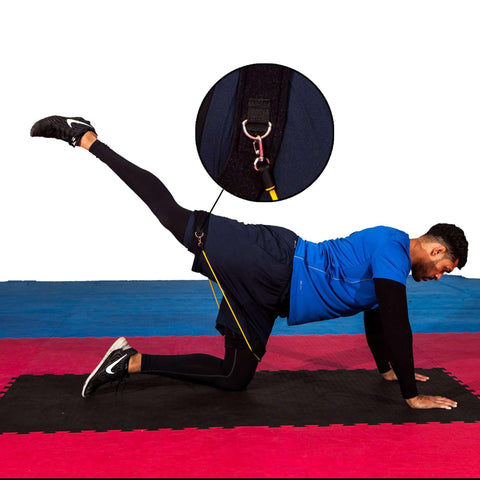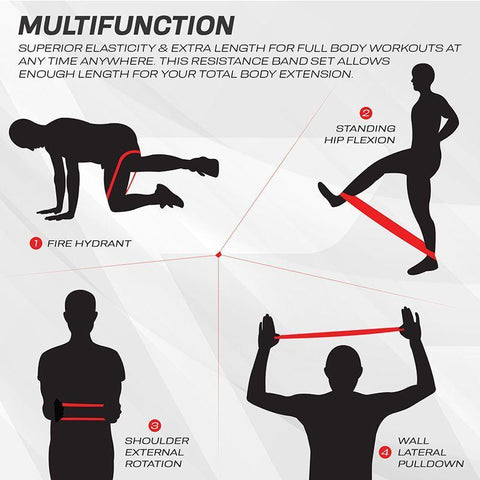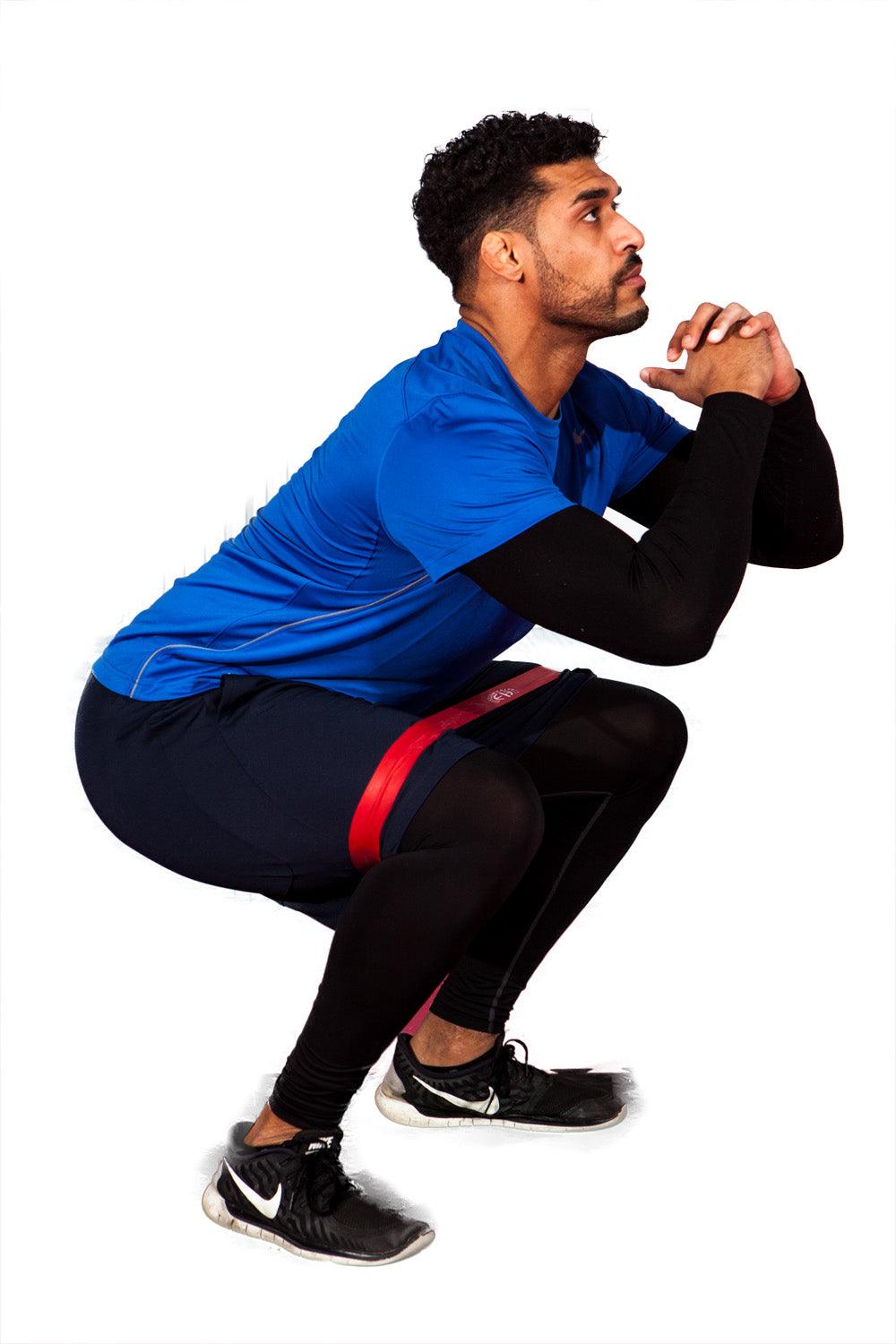I find the most effective way to enhance your flexibility and target key muscles in your body is by incorporating resistance bands into your stretching routine. I use resistance bands constantly for static and dynamic stretching In this guide, we will walk you through a series of basic stretches tailored for your hips, legs, chest, and back using resistance bands. By following some of these exercises, you can deepen your stretch, improve your flexibility, and avoid injuries associated with improper stretching techniques. Let's examine the world of resistance band stretching and unlock its full potential.
Key Takeaways for stretching with resistance bands:
- Use proper tension: When using resistance bands for stretching, ensure you use just enough tension to deepen the stretch without causing pain or discomfort.
- Avoid ballistic stretching: Steer clear of bouncing movements that create momentum and can lead to injury. Focus on gentle stretching and gradually improving flexibility.
- Stretch both sides equally: To enhance flexibility and prevent muscle imbalances, make sure to stretch both sides of your body equally when performing resistance band stretches.

Warm-Up Necessity
To ensure an effective stretching routine with resistance bands, warming up is a crucial step that should not be overlooked by any means. Proper warm-up helps reduce the risk of injury and maximizes the benefits of all stretching exercises.
How do you do warm up
Before venturing into your resistance band stretches, take a few minutes to prime your body by engaging in light cardiovascular activity. This could involve brisk walking, cycling, or jogging in place for approximately 10 minutes. The goal is to elevate your heart rate and increase blood flow to your muscles, preparing them for the stretching regimen ahead. If you are restricted by space then use exercises like squats and lunges for lower body and arm circles and air punches for the upper body.
During your warm-up, aim to reach a moderate level of intensity where you feel slightly out of breath but are still able to hold a conversation comfortably. This elevated state will optimize your body's readiness for the subsequent stretching routine.
If you've already completed a more intense cardiovascular workout, you can seamlessly transition into your resistance band stretches as part of your cool-down. This approach allows you to capitalize on the existing warmth and flexibility in your muscles, enhancing the overall stretching session.
Hamstring Stretch Instructions
There's no denying the importance of stretching, especially when it comes to targeting specific muscle groups with the help of resistance bands. One key area that can benefit greatly from stretching with resistance bands is the hamstrings. Here's how to perform a hamstring stretch effectively:
Start by lying on the floor and looping the resistance band around your right foot. Grab onto the band closer to your foot to create tension. Straighten your right leg as much as you comfortably can, while keeping your left leg bent on the floor.
Gently pull your right leg towards you, feeling the stretch in the back of the leg. Hold this position for 15 to 30 seconds before switching sides to stretch the left hamstring as well.
Safety Tip: It's important to note that stretching should not be painful. Avoid pushing yourself to the point of discomfort, as this can lead to injury. Pay attention to your body's signals and adjust the intensity of the stretch accordingly.
How to Do It Right: To ensure you are targeting the right muscles during the hamstring stretch, make sure your hips stay squarely on the mat. This will help you maintain proper form and maximize the effectiveness of the stretch.

Inner Thigh Stretch Guide
Any effective stretching routine should include exercises that target the inner thigh muscles. One great way to stretch these muscles is with the use of resistance bands. This Inner Thigh Stretch Guide will walk you through the proper technique to ensure you get the most out of this stretch.
Start by lying on the floor and loop the resistance band around your right foot. Grab onto the band with your right hand to create tension. Gently lower your right leg out to the side and towards the floor until you feel a stretch in the inner thigh. Hold this position for 15 to 30 seconds, allowing the muscle to relax and lengthen.
To ensure you don't overstretch, consider supporting your leg with the other hand. You can do this by holding both of the loose ends of the band in one hand while performing the stretch with the other hand. This will help you control the intensity of the stretch and prevent any potential strain.
Remember to switch sides to ensure both inner thighs are properly stretched. Incorporating this Inner Thigh Stretch into your routine will help improve flexibility in this area, leading to better overall muscle health and performance.

Lying Hip Stretch Protocol
If you want to improve your hip flexibility and alleviate tightness, the lying hip stretch with a resistance band is a great exercise to incorporate into your routine. This stretch targets the hip and glute muscles, providing relief for those with low back pain.
To begin the lying hip stretch, start by lying on your back on an exercise mat. Loop the resistance band around your right foot and grab onto it with your left hand. Your left leg should remain extended out on the floor.
Straighten your right leg and gently lower it across your body and towards the left side. You should feel a stretch in your right hip and glute. Make sure to move slowly and only go as far as you can comfortably go.
Hold the stretch for 15 to 30 seconds, focusing on deepening the stretch with each breath. Remember to keep your upper body aligned and parallel to the floor to ensure proper form.
After holding the stretch, switch sides and repeat the exercise with your left leg. It's crucial to stretch both sides equally to maintain balance and prevent muscle imbalances.
As with any stretching exercise, listen to your body and pay attention to any discomfort. If you experience pain, gently release the stretch and consult with a healthcare professional if necessary.

Upper Back Stretch Method
You can effectively stretch your upper back using a resistance band. This stretch helps to relieve tension and improve flexibility in the muscles of your back. Follow these steps to perform the upper back stretch correctly:
1. Sit on the floor with your legs extended and loop the resistance band around both feet. Cross the band and grab onto each side with both hands, keeping them close to your feet.
2. Gently curl forward, using the resistance band to create tension and add to the stretch. Keep your back straight and engage your core muscles.
3. Hold the stretch for 15 to 30 seconds, focusing on feeling the stretch in your upper back.
4. Remember to breathe deeply and relax into the stretch. Avoid any jerky movements or bouncing.
5. Slowly release the stretch and repeat if desired. You can perform this stretch multiple times to further enhance flexibility in your upper back.
By incorporating this upper back stretch into your routine, you can improve your posture, reduce back pain, and increase overall mobility in your upper body. Make sure to listen to your body and only stretch to your comfort level to prevent injury.

Chest Stretch Technique
Keep your body in a seated position, either cross-legged on the floor or in a chair. Grip the resistance band with your hands positioned a few inches apart.
Gently pull your arms out and down as low as you can to feel the stretch across your chest muscles. Focus on maintaining good posture throughout the stretch.
Safety Tip: If you have any shoulder issues, it's best to skip this exercise or opt for a different shoulder stretch to avoid any discomfort or injury.
How to Do It Right: Adjust your hand placement on the resistance band to find the right amount of tension. The stretch should be gentle yet effective in targeting your chest muscles.

Side Stretch Execution
After completing the warm-up and other stretches in your routine, it's time to focus on the side stretch. This stretch targets the muscles along the sides of your waist, helping to improve flexibility and reduce tension.
To perform the side stretch, sit on a chair or cross-legged on the floor. Hold onto one side of the resistance band with your left hand and reach your left arm towards the right side. Grab onto the other end of the band with your right hand.
Gently pull on the band with your right hand, creating tension that stretches the left side of your waist. Hold this position for 15 to 30 seconds, feeling the gentle stretch along your side.
After holding the stretch, release the tension slowly and repeat the same movement on the other side. Remember to maintain a comfortable level of tension throughout the stretch, avoiding any sharp or intense pain.
If you feel any discomfort or pain while performing the side stretch, adjust the tension of the band or decrease the range of motion until the sensation subsides. It's important to listen to your body and not push yourself beyond your limits.
Summing up
Conclusively, stretching with resistance bands is an effective way to target and improve flexibility in key muscle groups such as the hips, legs, chest, and back. By using the resistance band to deepen the stretch, you can gradually increase your range of motion and reduce the risk of injury. It is important to stretch to your comfort level, avoiding pain or ballistic movements. By following the safety tips and guidelines provided, such as holding each stretch for at least 15 seconds and ensuring equal stretching on both sides of the body, you can make the most out of your stretching routine. Whether you're a beginner or advanced, incorporating resistance band stretches into your workout can help enhance your flexibility and overall well-being.
FAQ
Q: Why should I use resistance bands for stretching?
A: Resistance bands allow you to deepen your stretch and increase flexibility by providing tension. This helps target specific muscles in the hips, legs, chest, and back effectively.
Q: How do I ensure I'm using the right amount of tension when stretching with resistance bands?
A: To find the right level of flexibility, adjust where you hold the band. Make sure the stretch feels gentle and comfortable without causing pain. Avoid bouncing movements and never force a stretch beyond its limits.
Q: What safety precautions should I take when performing stretches with resistance bands?
A: Avoid ballistic stretching and stop if you feel any pain. Hold each stretch for at least 15 seconds, stretching both sides of the body equally. Remember to warm up before starting with a few minutes of cardiovascular activity to reduce the risk of injury.









